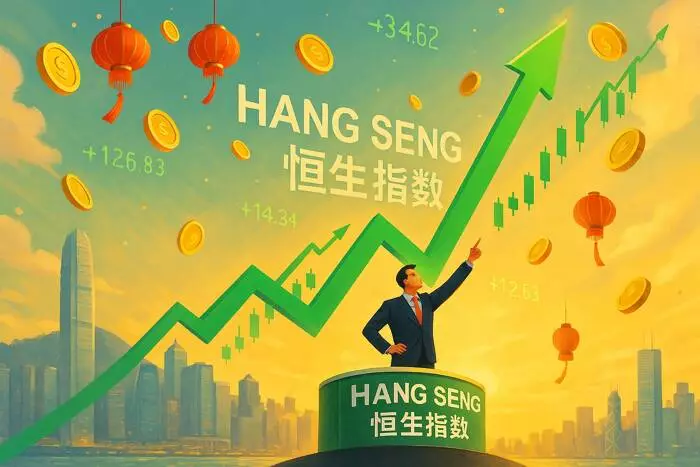In the complex tapestry of global markets, the Hang Seng Index (HSI) has demonstrated a remarkable capacity to not only withstand external pressures but also to thrive. In the week ending May 9, the HSI posted a notable gain of 1.61%, marking its fourth consecutive week of growth. This upward trajectory can be attributed primarily to Beijing’s proactive stimulus measures and the recent cooling of US-China trade tensions. As a barometer of market sentiment, the HSI reflects not only local economic conditions but also the broader interplay of international factors that continuously shape the financial landscape.
Electric Vehicle Stocks: Powering Gains
The surge in demand for electric vehicle (EV) stocks is one of the standout features of the recent rally. Stocks such as Geely Automobile Holdings, which soared by an impressive 10.07%, alongside Li Auto and BYD, have become driving forces behind the HSI’s rise. This trend underscores a critical pivot in investor sentiment towards sustainability and emerging technologies, suggesting that market participants are increasingly optimistic about the long-term viability of the EV sector. However, while these stocks basked in positive momentum, it is essential to remember that such rapid gains could lead to a volatile correction in the future, particularly in a market where speculation often reigns supreme.
The Mixed Bag: Tech and Property Pressures
Conversely, not all sectors shared in the euphoria. The Hang Seng TECH Index experienced a pullback of 1.22%, reflecting the ongoing challenges faced by the broader technology sector. Baidu’s 3.32% drop starkly contrasts with Alibaba’s modest 1.31% gain, suggesting a divergence in investor confidence even among major tech players. Similarly, the Hang Seng Mainland Properties Index dropped sharply by 3.73%. This deterioration raises concerns about the sustainability of the property market, which has been under significant pressure throughout recent months. The juxtaposition of these outcomes highlights an undercurrent of caution among investors, serving as a reminder that markets are often driven by individual narratives that can diverge starkly from the overall optimism.
Global Influences: The Role of Commodities
On a broader scale, commodity prices exhibited interesting fluctuations that reflect global economic sentiment. Gold rebounded impressively, gaining 2.88%, closing at $3,327, appealing to risk-averse investors amid market uncertainty. This move suggests a classic flight to safety as market participants grapple with potential headwinds. In the energy space, WTI crude oil prices climbed by 4.38%, driven largely by thawing trade tensions that could bode well for future demand. Conversely, falling iron ore prices indicate a divergence in commodity outlooks, as investors remain on edge regarding US-China trade negotiations. This scenario illustrates the intricate link between geopolitical events and commodities, emphasizing that investors should remain acutely aware of these dynamics when navigating the market.
Regional Perspectives: Asia’s Diverse Markets
The performance of other Asian markets vividly contrasts with the HSI’s robust rally. For instance, the Australian ASX 200 faced a slight decline of 0.08%, breaking a three-week winning streak as banking and mining sectors dragged down overall performance despite gains in tech and gold. Moreover, the Nikkei 225’s remarkable 3.61% surge highlights a different narrative, bolstered by trade optimism and the impact of a weaker yen, which boosts exporter competitiveness. These regional discrepancies demonstrate the uniqueness of every market’s response to global stimuli, reinforcing the notion that investors must adopt a nuanced, well-informed approach tailored to the idiosyncrasies of each market.
The Road Ahead: Navigating Upcoming Data Releases
Looking forward, market participants must brace for a wave of economic releases, including the critical US CPI report and labor market data from Australia. Notably, Japan’s forthcoming GDP figures will also draw keen attention as investors seek to assess underlying economic strength amid uncertain conditions. With inflation indicators in China suggesting potential demand weakening, the upcoming data could wield significant influence over market sentiment. As markets anticipate these revelations, the necessity for vigilance and flexibility cannot be overstated. Traders and investors alike should stay attuned to central bank rhetoric and trade developments, as these remain pivotal in understanding future market directions.
In this volatile environment, the adaptability of investors and their capacity to discern emerging trends will likely dictate their success. The era of heightened uncertainty demands not just analytical prowess but also a proactive response to the evolving dynamics at play.

